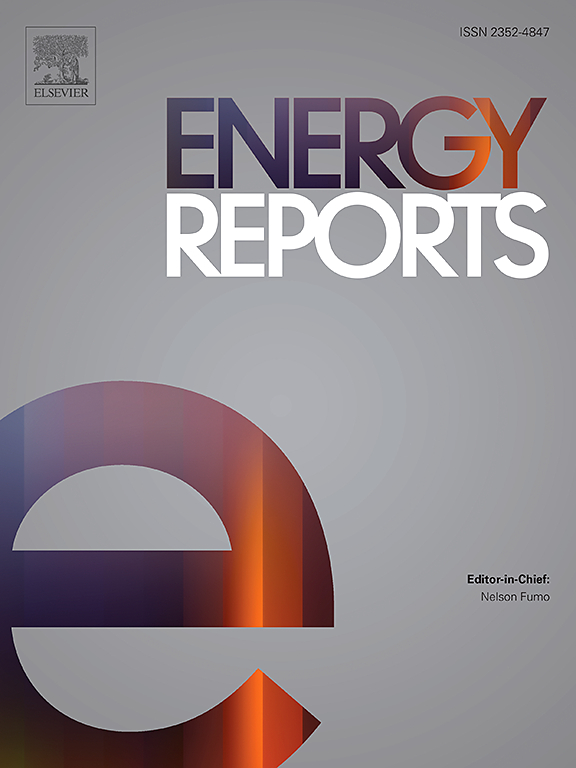基于鲸鱼优化的建筑能耗分布图聚类
IF 5.1
3区 工程技术
Q2 ENERGY & FUELS
引用次数: 0
摘要
智能电网需要先进的建筑需求侧管理解决方案来平衡可变的可再生能源生产。能源消耗概况细分可以提高流程的效率,使电网运营商能够针对不同的客户需求和行为提供更个性化的请求,从而提高参与度和参与者满意度。然而,由于消费者行为的多样性以及随着消费模式的演变而适应细分的需要,聚类能源概况的复杂性被放大了。由于大多数聚类算法对初始参数设置很敏感,这可能会影响它们的性能,因此提前确定消费者能源剖面聚类的数量是具有挑战性的。本文提出了一种基于鲸鱼优化算法(Whale Optimization Algorithm, WOA)的聚类方法,解决了能源数据的动态性和可变性问题。鲸鱼个体被定义为一组活跃的质心,这些质心是根据峰值和低谷期提取的压缩特征集来描述的,这些特征集中在大小、变化和效率上。为了促进能量分布簇的紧凑和良好分离,采用Calinski-Harabasz指数作为适应度函数。种群初始化采用K-Means+ +算法,保证了解空间中解的初始分布多样化。通过WOA算法的机制保证了解的进化,该算法允许候选解的逐步更新,以加速收敛并产生高质量的解。在某大学校园建筑日能耗的真实数据集上对该方法的效率进行了评价。实验结果表明,WOA方法优于所选择的最先进的方法进行比较。WOA的Davies-Bouldin指数最低(0.527),Silhouette得分最高(0.484),Ball-Hall系数最低(1.851),表明WOA在集群内部凝聚力和集群间可分离性方面都具有较好的分割效果。本文章由计算机程序翻译,如有差异,请以英文原文为准。
Whale optimization-based clustering for buildings’ energy consumption profiles
The smart grids require advanced building demand-side management solutions to balance variable renewable production. Energy consumption profile segmentation can increase the efficiency of the processes, enabling grid operators to provide more personalized requests to different customer needs and behaviors increasing engagement and participant satisfaction. However, the complexity of clustering energy profiles is amplified by the diversity of consumer behavior and the need to adapt segmentation over time as consumption patterns evolve. Establishing the number of consumer energy profile clusters in advance is challenging, as most clustering algorithms are sensitive to initial parameter settings, which can affect their performance. In this paper, we propose a new clustering method based on the Whale Optimization Algorithm (WOA), which addresses the problem of dynamicity and variability of energy data. The whale individual is defined as a set of active centroids described by a compressive set of features extracted based on peak and valley periods focused on magnitude, variation, and efficiency. To promote compact and well-separated clusters of energy profiles the Calinski-Harabasz index was used as a fitness function. Population initialization is performed using K-Means+ + algorithm which ensures a diversified initial distribution of solutions in the solution space. The evolution of solutions is ensured through the mechanisms of the WOA algorithm, which allow the gradual updating of candidate solutions to accelerate convergence and produces high-quality solutions. The efficiency of the method was evaluated on a real dataset of daily energy consumption of buildings on a university campus. The experimental results show that the WOA method outperforms the selected state-of-the-art methods for comparison. WOA obtained the lowest Davies–Bouldin index (0.527), the highest Silhouette score (0.484) and the lowest Ball–Hall coefficient (1.851), indicating superior segmentation in terms of both internal cohesion and inter-cluster separability.
求助全文
通过发布文献求助,成功后即可免费获取论文全文。
去求助
来源期刊

Energy Reports
Energy-General Energy
CiteScore
8.20
自引率
13.50%
发文量
2608
审稿时长
38 days
期刊介绍:
Energy Reports is a new online multidisciplinary open access journal which focuses on publishing new research in the area of Energy with a rapid review and publication time. Energy Reports will be open to direct submissions and also to submissions from other Elsevier Energy journals, whose Editors have determined that Energy Reports would be a better fit.
 求助内容:
求助内容: 应助结果提醒方式:
应助结果提醒方式:


